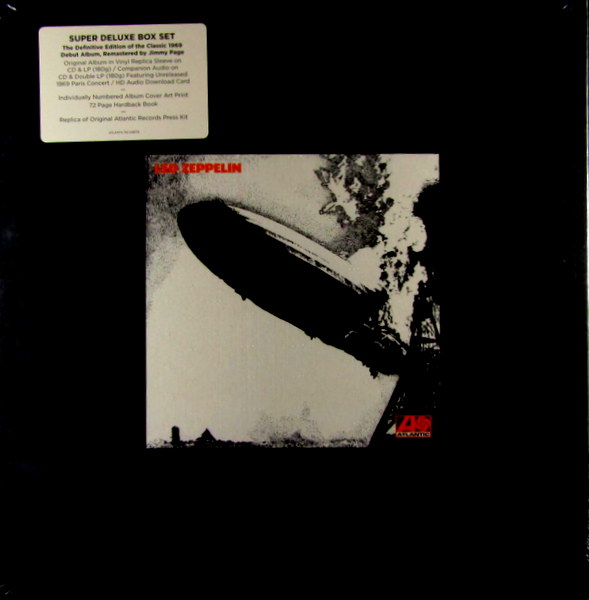
Plant played it on some of his solo tours, while Jones performed it live with Diamanda Galás in 1994. The group played it on at least one show for all subsequent tours, including their residency at Earl's Court, London in 1975, the second appearance at the 1979 Knebworth Festival, and the band's final tour in 1980. It was played at every gig until 1970, after which it was featured as an encore. "Communication Breakdown" was part of the group's initial live set in 1968. Singer Robert Plant could not receive a songwriting credit owing to a previous record contract, and consequently it was credited simply to the other three band members. Bassist John Paul Jones later said "This is Page's riff – you can tell instantly". It developed from a guitar riff played by Jimmy Page, while the rest of the band wrote the song around it. It was one of the first worked on by the band, shortly after formation and before they had played any gigs. The song is 2 minutes and 26 seconds long. A promotional video was released, with the group miming to the recording, which is included on the Led Zeppelin DVD (2003). It was also used as the B-side of the group's first single in the US, " Good Times Bad Times". " Communication Breakdown" is a song by the English rock band Led Zeppelin, from their 1969 self-titled debut album. Stairway To Heaven gets all the attention – those intro arpeggios now a guitarist’s rite of passage – but the pitter-patter of mandolin and big open acoustic chords of The Battle Of Evermore are so comprehensive that drummer John Bonham could sit this one out.Īnd the hypnotic Going To California, with Page tuned to double drop D tuning (low to high: D-A-D-G-B-D), performs a miracle, switching the mood from Middle-earth to West Coast Pacific, setting up the album’s swampy denouement, When The Levee Breaks.1969 single by Led Zeppelin "Communication Breakdown" Then came the officially untitled album commonly known as Led Zeppelin IV. A spruce-topped acoustic, rosewood back and sides, the Craviola has a shape that resembles a lute crossed with a dreadnought, and a tone that was positively celestial. Live and on record, Page would use his 1970 Giannini Craviola 12-string for Tangerine.

Tangerine is a classic minor-to-major key ballad, featuring both six- and 12-string acoustics. Led Zeppelin III signed off with a country-folk supernova of strumming and another nod to Jansch, Bron-Y-Aur Stomp, but not all of its acoustic arrangements were folk. It was Fred Gerlach’s version that caught Page’s ear.Īgain, Page would take a traditional piece and make it his own: “I thought it was quite curious the way that song had started off in England and gone all the way around the States and come back, so then we were going to do it and send it back to the States again as a folk song.” One of those tracks was Gallows Pole, a foot-stomping folk tune that was centuries in the making, evolving out of an olde English standard, The Maid Freed From The Gallows, that had been reworked by the likes of Bob Dylan and Lead Belly. There were so many ideas put into the first album, but they were able to grow and be developed.” “It’s just variations on a theme, really. “People were saying, ‘Oh, Led Zeppelin’s gone acoustic.’ Well, what happened to your ears on the first album and the second album?” he said. Well, what happened to your ears on the first album and the second album? Jimmy Page People were saying, ‘Oh, Led Zeppelin’s gone acoustic’. Speaking to Total Guitar in 2020, Page said it gave them the space to explore the acoustic side of the band. On treble clef, it almost looks like an electric arrangement. As is Ramble On, a Tolkien-inspired track given forward motion by acoustics strummed hard.

Either way, Thank You is one trippy journey. The three-dimensionality of Page’s production feels like a VR headset would be more appropriate than headphones. Page and Jones repeated the trick on Led Zeppelin II with Thank You, the ne plus ultra of gourmet ’70s rock arrangements. Page’s acoustic often did its best work when seeking out pockets of frequencies in busy mixes, adding texture and changing the feel of the composition. The hot summer ennui of Your Time Is Gonna Come transitions to pure Americana once John Paul Jones’ organ opens the floor to Page’s fingerstyle acoustic. That first album had more great acoustic moments. Performed on a Gibson J-200 jumbo, Black Mountain Side was an early showcase for Page’s acoustic orchestration and the freedom he found in open tunings, DADGAD on this occasion.


 0 kommentar(er)
0 kommentar(er)
